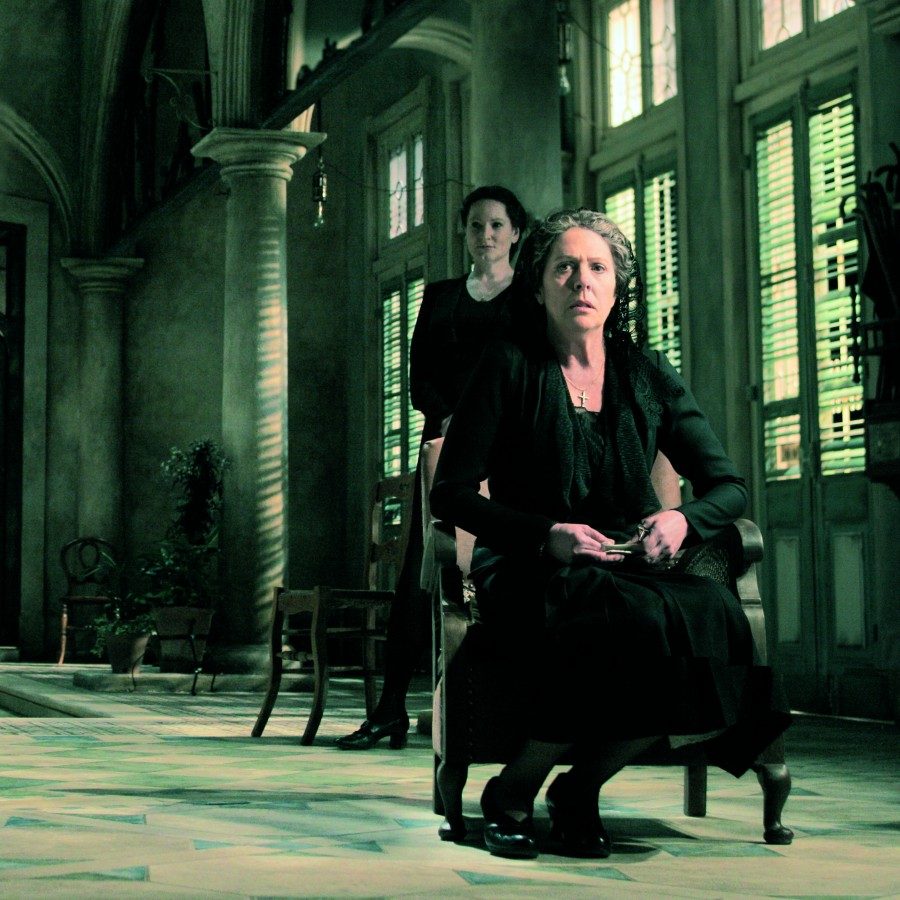Archive Unboxed: The House of Bernarda Alba and translation
Posted

The House of Bernarda Alba has been relocated from the walls of an Andalusian house in 1930s Spain to 21st-century Britain in our latest production. Federico García Lorca’s characters may be confined within the walls of the house, but they have been brought to life through the vision of the artistic team, including director, Rebecca Frecknall and writer, Alice Birch.
Lorca’s 1936 play both introduces boundaries and breaks them. Here, it is the women who take centre stage. The widowed Bernarda Alba, “Empress of all she surveys” (The House of Bernarda Alba, Act 1), extends an iron grip over her five daughters during a period of mourning in their Andalusian house.
People out there – beyond these walls – all they want is to raise a tide of filth to drown us all.
The House of Bernarda Alba, Act 2
History at the National Theatre
While The House of Bernarda Alba is the most recent of Lorca’s plays to be staged by the National Theatre, it is by no means the first. Yerma was first staged at the Cottesloe Theatre in 1987, before being revived at the Young Vic (2017), starring Billie Piper as Yerma, which was filmed as part of NT Live and is available to view on NT at Home and in the National Theatre Archive.
Another of Lorca’s plays, Blood Wedding, was staged in 1991, as an NT Education production. These plays are often considered a ‘rural trilogy’, with The House of Bernarda Alba being completed only two months before Lorca’s assassination in the Spanish Civil War.
The House of Bernarda Alba was first staged by the National Theatre at the Lyttelton Theatre in 2005, starring Penelope Wilton as Bernarda Alba and Sally Hawkins as her rebellious youngest daughter, Adela. The director of this production was Howard Davies, who directed several translated plays for the National Theatre, including Henrik Ibsen’s Hedda Gabler (1989) and Mikhail Bulgakov’s Flight (1998).

Dame Harriet Walter and Isis Hainsworth in rehearsals
Adapting a translated play
Adapting a translated play is a complex task for any director. It requires an understanding of the original playwright’s style and references which may be obvious to the original audience, but not necessarily to a British audience. This is why a literal translator is usually commissioned to translate the play into English and a playwright then creates the performance script from the translation.
Olivier Award-winner David Hare’s 2005 version was based on a literal translation by actor Simon Scardifield. The Independent describes how, when Davies asked Hare to adapt The House of Bernarda Alba, Hare felt that the play was one-dimensional. Despite Hare’s initial reluctance, Davies managed to persuade him to adapt the work and was delighted with the result:
He had caught hold of something very vital. This isn’t a laugh-a-minute play, but when people behave badly, I find it absurd and therefore comedic.
– Independent
Despite the difficulty of translating and adapting Lorca, Hare’s version was praised by critics for its in-depth exploration of the characters of Bernarda’s daughters and how it maintained the vitality of the original play. The Independent commented that “Lorca’s poetry remains tantalisingly subtextual, resonating in the mind” and so it seems that this version succeeded in arguably the most challenging task of adapting a translated play: capturing the distinctive flavour of the original.
Now, 18 years later, another artistic team have joined forces to offer a vivid, new interpretation of Lorca’s tragic drama. The House of Bernarda Alba opens at the Lyttelton Theatre on 16 November 2023 and runs until 6 January 2024. This new production includes Olivier Award-winner Dame Harriet Walter as Bernarda Alba and Thusitha Jayasundera as Poncia.
Find out more
About the author: Hannah Klimas is a PhD candidate at the University of Leeds, specialising in theatre translation. She is currently involved in a script cataloguing project at the National Theatre Archive, with a special focus on the work of translators in the scriptwriting process.
The National Theatre Archive is open and free for visitors. Find out more about how to visit, take a tour and opportunities to get involved.
Photo © Catherine Ashmore
The House of Bernarda Alba, National Theatre, 2005